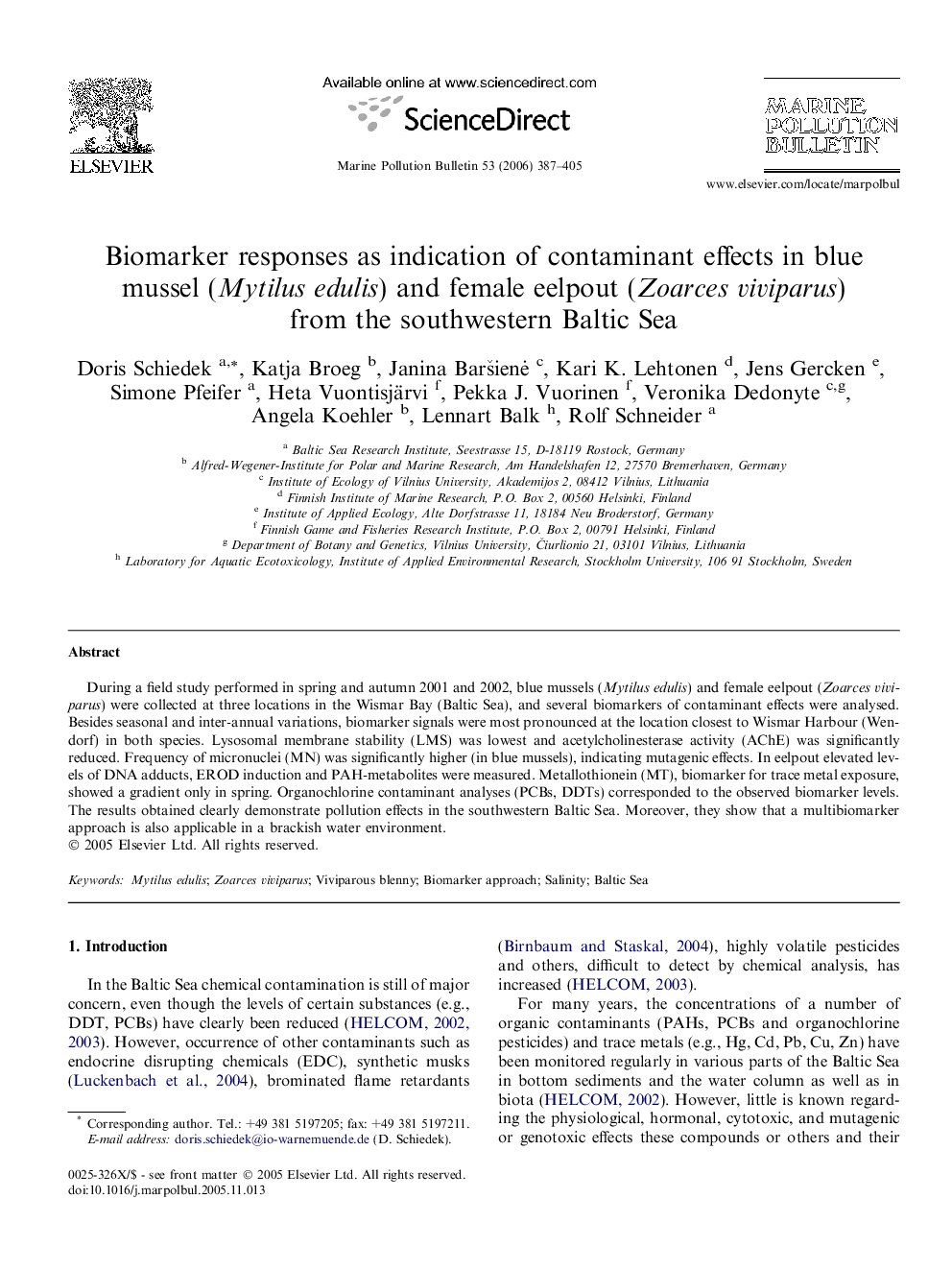| Article ID | Journal | Published Year | Pages | File Type |
|---|---|---|---|---|
| 4477763 | Marine Pollution Bulletin | 2006 | 19 Pages |
During a field study performed in spring and autumn 2001 and 2002, blue mussels (Mytilus edulis) and female eelpout (Zoarces viviparus) were collected at three locations in the Wismar Bay (Baltic Sea), and several biomarkers of contaminant effects were analysed. Besides seasonal and inter-annual variations, biomarker signals were most pronounced at the location closest to Wismar Harbour (Wendorf) in both species. Lysosomal membrane stability (LMS) was lowest and acetylcholinesterase activity (AChE) was significantly reduced. Frequency of micronuclei (MN) was significantly higher (in blue mussels), indicating mutagenic effects. In eelpout elevated levels of DNA adducts, EROD induction and PAH-metabolites were measured. Metallothionein (MT), biomarker for trace metal exposure, showed a gradient only in spring. Organochlorine contaminant analyses (PCBs, DDTs) corresponded to the observed biomarker levels. The results obtained clearly demonstrate pollution effects in the southwestern Baltic Sea. Moreover, they show that a multibiomarker approach is also applicable in a brackish water environment.
